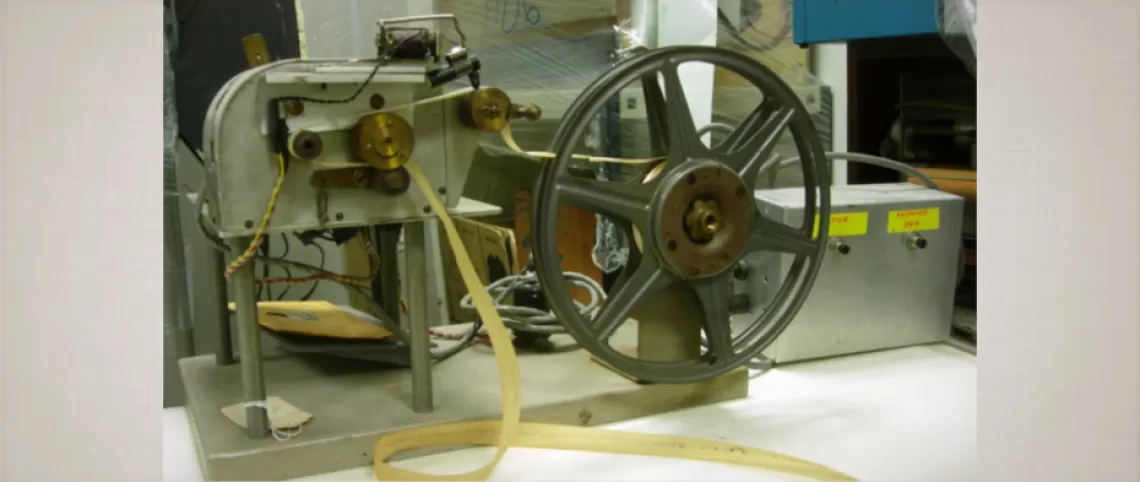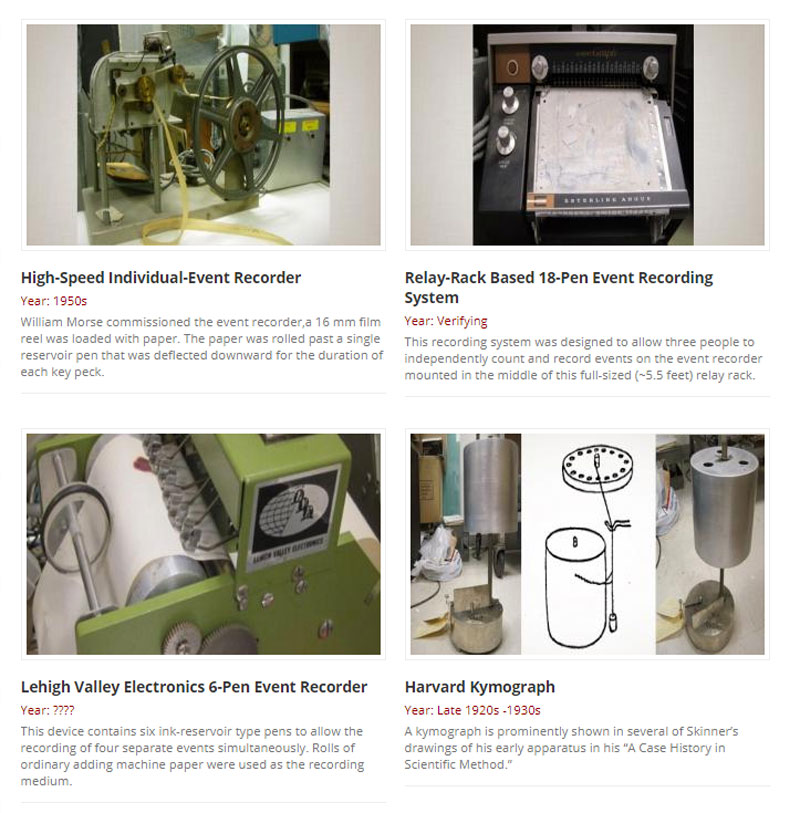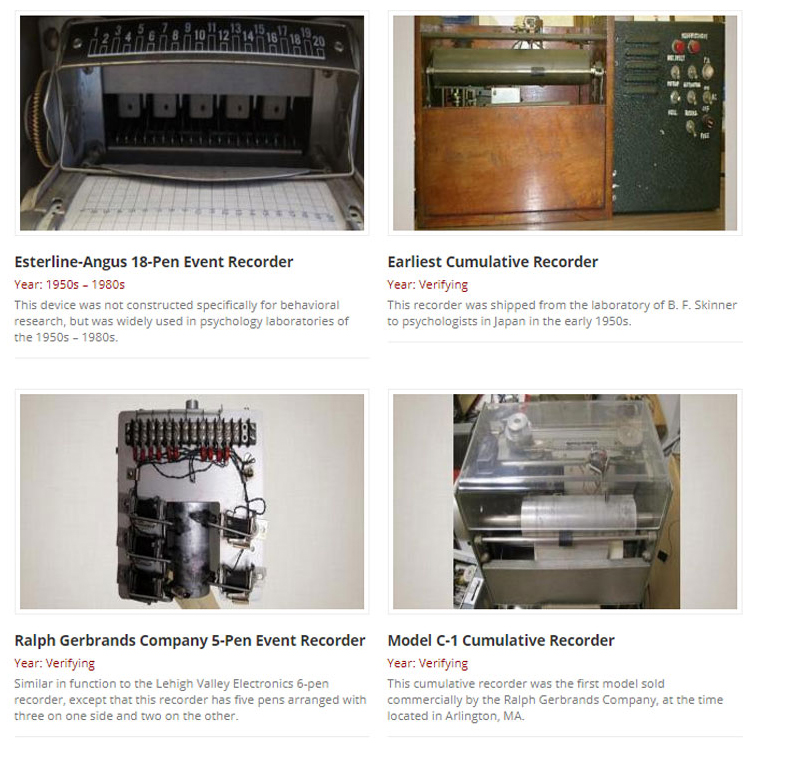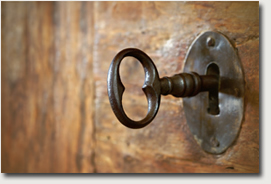
INDIRECT OBSERVATION & MEASUREMENT
Instruments for Recording Events in Real Time
Events of interest in behavioral research are stimuli, responses, or consequences. The temporal relations between these events often are critical in the development and maintenance of behavior. For example, the closer in time a reinforcer is to a response, the more likely it will develop or be maintained. It also is possible to reinforce not just a single a response, but a pair of responses separated by specified periods of time (a differential-reinforcement-of-low-rate schedule, for example). In the case of Pavlovian or respondent conditioning, the temporal relation between the conditional stimulus and the unconditional stimulus is critical for learning. The devices in this room of the museum were designed to capture these temporal relations.
The devices all consist of a means of marking and recording the event, a metal stylus or pen, and something to record the event on, typically conventional paper but some early instruments used a carbon-blackened paper (see kymographs below). The instruments that measure/record the events (called transducers) are attached to the marking/recording device. Either a single marking device or multiple marking devices were included in the different instruments. With multiple marking devices, the types of temporal relations between events could be seen. Because events are recorded in real time, paper is rolled across the recording surface (called a paten) by means of a motor operating at a constant speed.
Two types of event recording instruments are on display. One type, called an event recorder, simply records “yes” the event occurred (and, by default, if it doesn’t operate it signals that the event did not occur). These instruments make a simple “pip” or downward deflection of an event pen whenever an event occurs. A second type of device for recording events records them as accumulated responses in time. As the recording paper moved across the marking device at a constant speed, every occurrence of the event moved the marking device one step up the page. The result of this is a graph showing cumulative (accumulating) responses in real time. These devices are called “cumulative recorders” and found their most sophisticated development by B. F. Skinner and his colleagues.






Back to the Lobby


